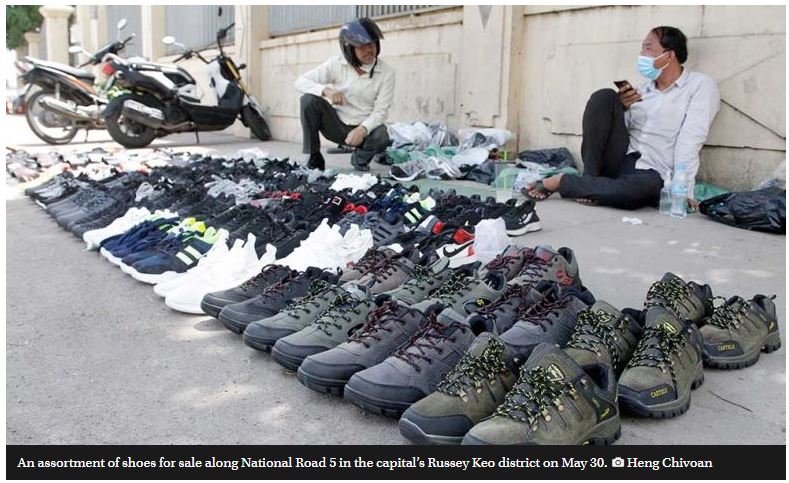Cambodia: Footwear exports may slip in Q4
Cambodia exported $1.325 billion worth of “footwear, gaiters and the like; parts of such articles” in the first nine months of 2022, up 32.69 per cent year-on-year from $998.238 million, Customs data show.
However, industry insiders have reported a material slowdown in new orders in the third quarter, and other signs of possible weakness in exports in the coming months, as global post-Covid-19 inflation concerns mount amid elevated oil prices.
The aforementioned category of items, corresponding to Chapter 64 of the harmonised tariff schedule, accounted for 7.67 per cent of the value of the Kingdom’s total exports over the period, or $17.258 billion, General Department of Customs and Excise of Cambodia (GDCE) statistics indicate.
In September alone, Chapter 64 exports were $141.815 million – up 35.58 per cent from $104.601 million in the same month of 2021 – accounting for 10.71 per cent of the nine-month total. On the other hand, the July-September quarter was relatively strong, representing 36.08 per cent of the nine-month total at $477.91 million, up 32.69 per cent year-on-year.
For comparison, the June, July and August figures were $144.568 million, $198.599 million and $137.497 million, respectively, up 19.15 per cent, 38.64 per cent and 22.42 per cent on a yearly basis.
Cambodia Footwear Association president Ly Kunthai told The Post on November 1 that the January-September Chapter 64 exports surged on the back of a steady stream of orders as countries around the world reopened and dialled back Covid-induced cross-border restrictions, especially in the first half of this year.
However, gloomy views of the market for footwear and other Chapter 64 items began to emerge in the third quarter, amid rising uncertainty surrounding global economic growth, the Russo-Ukrainian conflict, heightened oil and food prices, and Sino-US geopolitical disputes, he said.
“Orders have dropped significantly compared to the beginning of 2022.”
However, under an optimistic scenario where the ongoing wave of crises subsides to a considerable degree, Kunthai surmised that Cambodia’s network of buyers in major countries would “surely” step up orders again.
He commented that many prominent international brands such as Adidas, Clarks and Timberland manufacture their shoes in Cambodia, and that major markets for locally-made footwear include the US, Canada, the UK, Japan and other European and Asian countries.
Kunthai recently mentioned that there are about 70 footwear factories in the Kingdom – most of which are invested by entities from mainland China, Hong Kong and Taiwan in the Greater China region, South Korea and Japan – and that most raw materials in making footwear are imported from mainland China, Vietnam and Thailand.
Hong Vanak, director of International Economics at the Royal Academy of Cambodia, said that the correlation between the health of the global economy and the volume of orders for locally-made footwear and similar goods underscores the reliance of the corresponding Cambodian manufacturing sub-sector on large countries with growing economies.
He said that Cambodian exports overall have been notably affected by subdued consumer spending around the world, weighed by economic growth issues, potential energy shortages that are shaping to be especially severe in Europe, towering oil prices and inflation, all of which are tied to the Ukraine crisis.
“This increase in export values indicates that these products were in high demand, but according to information I’ve received, in the second half of the year, orders and exports won’t see results as positive as in the beginning of the year,” Vanak said, adding that locally-made Chapter 64 items would be in high demand when travel picks up.
In 2021, the Kingdom exported $1.392 billion worth of “footwear, gaiters and the like; parts of such articles”, up 23.98 per cent from $1.123 billion in 2020, which was down 11.20 per cent from $1.265 billion in 2019, GDCE statistics show.
Source: https://www.phnompenhpost.com/business/footwear-exports-may-slip-q4


 Thailand
Thailand




